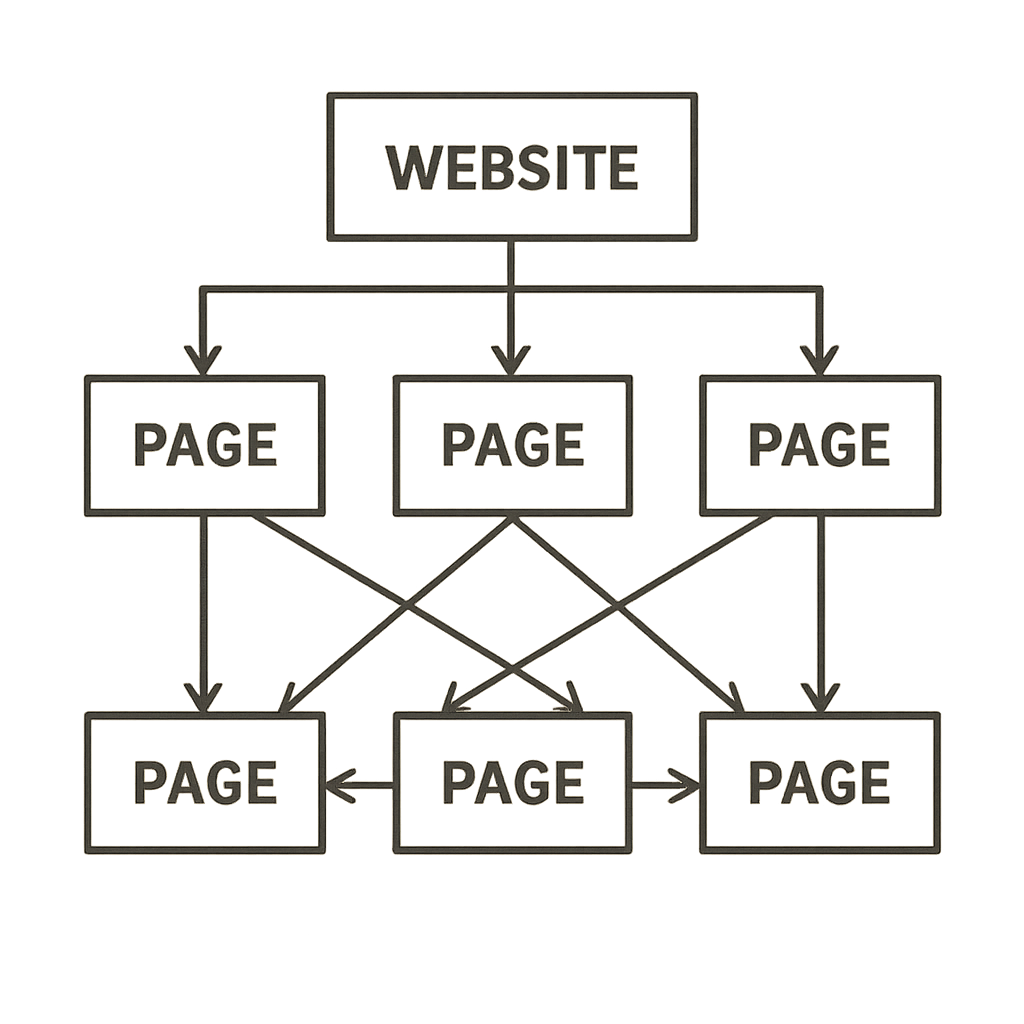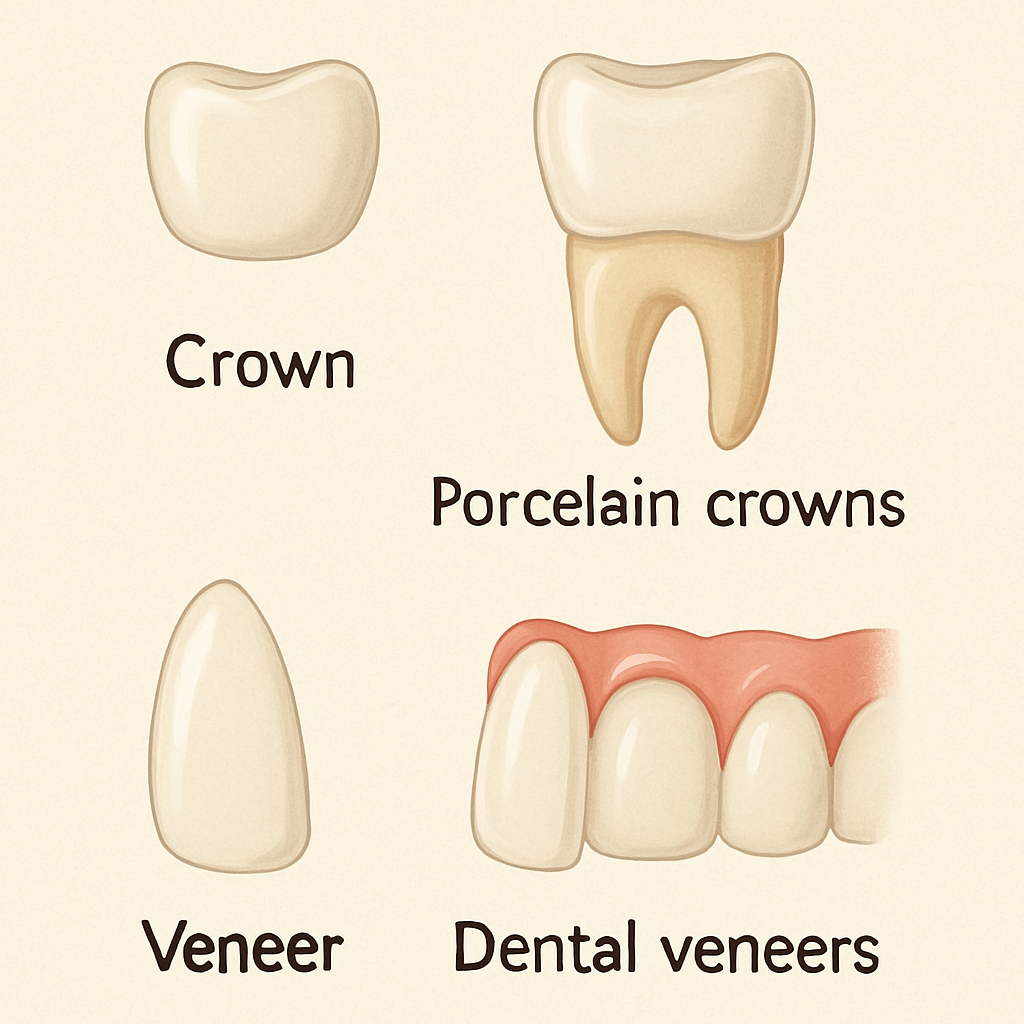Internal linking is a powerful SEO tool. It connects pages within a website, enhancing navigation and user experience.
By strategically placing internal links, you can guide visitors to important content. This keeps them engaged and reduces bounce rates.
Internal links also distribute page authority, boosting the visibility of key pages. This can improve your site’s search engine rankings.
Effective internal linking requires a well-planned strategy. It involves understanding your site’s structure and prioritizing high-value pages.
Using descriptive anchor text is crucial. It provides context to both users and search engines, enhancing relevance.
Regular audits of your internal links ensure they remain functional and effective. This helps maintain a seamless user experience.
Internal linking is not just about SEO. It’s about creating a cohesive and engaging journey for your visitors.
Mastering internal linking techniques can significantly impact your site’s success. Let’s explore these strategies in detail.

What Is Internal Linking and Why Does It Matter for SEO?
Internal linking involves hyperlinking between pages within the same website. It’s a fundamental part of SEO.
These links enhance site navigation and help visitors discover related content. This improves user engagement and experience.
For search engines, internal links provide a roadmap to your site’s architecture. They help in discovering and indexing pages efficiently.
By strategically using internal links, you can signal to search engines which pages are most important. This can boost rankings.
Key Benefits of Internal Linking:
- Enhances user navigation and content discovery.
- Distributes page authority and ranking power.
- Improves indexing efficiency by search engines.
- Highlights priority and cornerstone content.
Internally linking high-authority pages to lower-ranked ones spreads link equity. This can enhance visibility for lesser-known pages.
In summary, internal linking is not just a tactic but a necessity for a robust SEO strategy. It serves dual purposes: enhancing user journey and improving your site’s crawlability and authority in search engines. Understanding its impact helps in leveraging it effectively for better SEO outcomes.

Types of Internal Links: Navigational, Contextual, and More
Internal links can be categorized into several types, each serving distinct purposes. Understanding these can improve SEO strategies.
Navigational Links guide users through the main sections of your site. They often appear in menus or footers.
Contextual Links are placed within content, pointing to related or supplementary information. These add depth to content and engage users.
Another useful type is Footer Links. These can address important but secondary pages. They maintain site structure without cluttering prime space.
Common Types of Internal Links:
- Navigational Links: Found in menus, guiding page navigation.
- Contextual Links: Found within content for deeper engagement.
- Footer Links: Placed in footer for important supplementary pages.
- Sidebar Links: Used in sidebars to highlight related articles or sections.
Using a variety of internal links helps distribute link authority evenly. Each plays a role in user navigation and SEO value, forming a cohesive link structure critical for effective site management. Understanding these types helps in forming a strategy that maximizes both user engagement and search engine effectiveness.
How Internal Linking Impacts SEO Performance
Internal linking plays a pivotal role in enhancing a website’s SEO performance. These links help search engines understand the structure and hierarchy of a site.
By distributing page authority, internal links ensure that important pages receive the visibility they deserve. Linking from high-traffic pages boosts lesser-known pages.
User experience improves as internal links guide visitors to relevant and valuable content. This reduces bounce rates and increases time spent on site.
Key SEO Benefits of Internal Linking:
- Improved Indexing: Helps search engines crawl and index deeper pages.
- Enhanced Page Authority: Spreads link equity and authority across pages.
- User Engagement: Keeps users on site longer with relevant content.
Moreover, a well-structured internal linking strategy can assist in passing context and relevance signals to search engines. This strengthens overall site authority. Regular audits of internal links ensure their effectiveness and help avoid potential pitfalls, leading to sustained improvements in site rankings. Balancing internal links can result in a healthier SEO profile and more consistent search engine visibility.
Planning Your SEO Link Structure: Foundations for Success
Establishing a robust SEO link structure begins with thoughtful planning. This is crucial for effective internal linking.
First, assess your site’s current architecture. Identify key pages that drive conversions or hold valuable content. These pages form the anchor of your internal linking strategy.
A logical and clear hierarchy helps both users and search engines navigate your website with ease. Start by mapping out your main categories and subcategories. Align these with user intent and search engine guidelines.
Steps to Plan Your Link Structure:
- Identify Key Pages: Determine which pages are top priorities.
- Map the Hierarchy: Establish a clear category/subcategory tree.
- Link Strategically: Place links where they naturally fit and add value.
Make sure these key pages are linked directly from the homepage or main categories. This enhances their visibility and authority. Additionally, incorporate tools like Google Analytics to understand user behavior. Use this data to refine your strategy over time.
A visual sitemap can be an invaluable asset. It not only helps you visualize your link structure but also aids in detecting potential bottlenecks or overlooked pages. Regularly review your link structure, adapting it as your site grows or user behavior changes. Laying a solid foundation is pivotal for ongoing SEO success.
Identifying and Prioritizing Key Pages for Internal Link Building
Prioritizing key pages is a fundamental step in internal link building. Identifying these pages ensures that your internal linking efforts are focused where they matter most.
Start by evaluating which pages drive conversions or are integral to your user goals. These might include product pages, service descriptions, or cornerstone blog content. Pages with high engagement or traffic are often strong candidates.
Checklist for Identifying Key Pages:
- High Traffic Pages: Pages that attract consistent visitors.
- Conversion-Focused Pages: Pages that drive sales or leads.
- Cornerstone Content: Authoritative content pieces on your site.
Linking strategically to these pages boosts their visibility and authority. It also enhances their chances of ranking better on search engines.
Once identified, ensure these pages are easily accessible from various sections of your site. Internal links should naturally fit into your site’s content. Aim to guide users while enhancing their experience, and avoid overlinking, as this can dilute link value.
Regularly reassess your key pages to reflect business goals or content updates. Prioritization is not a one-time task. Adjust your strategy to align with evolving goals and user preferences over time. This adaptability can significantly enhance the effectiveness of your internal linking efforts.
Creating Topic Clusters and Content Hubs
Creating topic clusters and content hubs enhances your website’s SEO by organizing information logically. These clusters connect related content, making it easier for users and search engines to navigate.
Topic clusters typically consist of a pillar page that covers a broad subject comprehensively. Around this pillar, you’ll find content pieces that delve into more specific aspects of the topic. These pieces link back to the pillar page, reinforcing its authority.
Advantages of Topic Clusters:
- Improved Organization: Enhances site structure and user navigation.
- Enhanced Authority: Reinforces topical authority with interlinked content.
- Increased Engagement: Encourages users to explore related topics.
Begin by identifying central themes relevant to your audience. Map out subtopics that relate back to these themes. This approach allows you to create a web of internal links that enhance the user experience while boosting SEO.
Implementing content hubs ensures your site delivers a seamless flow of information. With this structure, users find relevant content easily, which can lead to longer visits and higher engagement. Over time, this strategy can improve your site’s authority and rank across related topics.
Best Practices for Anchor Text in Internal Links
Anchor text is crucial in internal link building, providing both context and value. It tells users and search engines what the linked page is about, influencing SEO and user experience.
When selecting anchor text, ensure it is descriptive and relevant. Avoid generic phrases like “click here” or “read more,” as these offer little to no information about the content of the linked page.
Effective Anchor Text Guidelines:
- Relevance: Ensure the text relates to the linked page.
- Descriptive: Provide clear context with specific language.
- Natural Flow: Avoid making the text sound forced within the content.
Incorporating keywords naturally in anchor text can further enhance SEO benefits. However, over-optimizing with too many keywords can lead to penalties from search engines.
Additionally, it’s important to vary your anchor text to keep it engaging for readers and search engines. This diversity helps prevent any appearance of manipulative linking strategies and can contribute to a more natural link profile.
By following these best practices, you can improve the impact of your internal links, making them more effective for both SEO and user engagement.
Contextual Linking Strategies: Adding Value for Users and Search Engines
Contextual links are placed within the content body and offer significant SEO benefits. They provide readers with pathways to explore additional relevant information, enhancing the user experience.
These links are critical because they help distribute link juice and improve page authority. They also assist search engines in understanding the content’s context and relevance.
Effective Contextual Linking Practices:
Balanced Quantity: Avoid overwhelming the text with too many links.
Natural Placement: Integrate links seamlessly into the narrative.
Relevance and Value: Link to content that adds real value to the reader.
To maximize the benefits of contextual links, ensure they lead to pages that enhance user understanding or provide further insights. This approach helps retain visitors on the site longer and can reduce bounce rates.
By focusing on contextual linking, you support an intuitive navigation experience, guide users logically, and strengthen your overall SEO strategy. This makes them invaluable for building a comprehensive and impactful internal linking structure.
Navigational Links and Site Architecture Optimization
Navigational links are the backbone of a website’s structure. They ensure visitors can easily find essential sections, like home pages and category pages. Optimizing these links improves user experience and site engagement.
A well-organized navigational structure guides both users and search engines. It’s important to maintain a simple and intuitive design to enhance site usability. A cluttered navigation menu can lead to confusion and frustration.
Key Components of Effective Navigation:
- Clear Labels: Use descriptive and concise labels for menus.
- Logical Hierarchy: Arrange links in a way that reflects site importance.
- Consistency Across Pages: Maintain uniform navigation throughout the site.
Enhancing your navigational links simplifies the flow of link equity across the site. Additionally, this structured approach helps search engines efficiently crawl and index the site. A robust architecture supports the overall SEO goals by facilitating smooth transitions across pages.
By focusing on navigational optimization, you create a user-friendly environment that aligns with search engine expectations. This combination fosters higher engagement rates and better search rankings.
Passing Authority: Linking from High-Authority to Low-Authority Pages
Internal linking plays a crucial role in distributing authority within a website. High-authority pages are valuable assets since they often rank well in search results. By strategically linking these pages to lower-authority pages, you can pass on some of their ranking power.
This process, known as link equity distribution, enhances the visibility of lesser-known pages. It also helps in improving their SEO performance. Careful placement and selection of links are critical in maximizing this benefit.
Strategies for Effective Authority Passing:
- Identify High-Authority Pages: Use analytics tools to pinpoint these pages.
- Select Relevant Low-Authority Pages: Ensure the linked content is contextually related.
- Limit Outgoing Links: Maintain focus and link juice on target pages.
Balancing link equity allows all your content to shine. It prevents older content from overshadowing new or less visible material. Also, careful link placement ensures that users find value in every click, improving overall site engagement.
Efficient authority passing supports SEO efforts. It helps maintain a balanced link structure that benefits all content, driving up your site’s ranking potential.
Supporting New and Orphaned Content with Internal Links
Introducing new content to your website poses a unique challenge. Without a well-thought-out internal linking strategy, new pages may remain hidden from both users and search engines. Internal linking helps assimilate new content into your existing structure, boosting its visibility.
Orphaned content, which lacks incoming internal links, faces similar challenges. These pages are often overlooked by search engines, undermining their ranking potential. Strategic internal linking ensures these pages connect to the main site structure, improving their chances of discovery.
Strategies for Supporting New and Orphaned Content:
- Create Links from High-Traffic Pages: Redirect user attention to these less-viewed pages.
- Use Contextual Links: Integrate new and orphaned pages within related content naturally.
- Leverage Blogs and Resource Pages: These frequently updated sections can highlight and link to new entries.
Enabling internal links for new and orphaned content provides significant SEO advantages. It reduces the risk of content remaining undiscovered. An organized linking strategy supports continued engagement across your site, offering a more dynamic user experience.
Internal Linking for E-commerce, Blogs, and Other Site Types
Different website types benefit from tailored internal linking strategies. For e-commerce sites, internal links can enhance user navigation and boost product discovery. Linking related products or bundling items together directs users to potential purchases, thus increasing sales opportunities.
Blogs, on the other hand, thrive on rich content interlinking. Contextual links within posts encourage readers to explore similar topics, which can enhance visitor engagement and time spent on site. This strategy also improves the depth of content offerings.
For informational and news sites, linking strategies should focus on deepening the story or connecting readers to background information or related articles. This keeps users well-informed and invested in your content.
Effective Internal Linking Tactics:
- Cross-Promote Products or Articles: Enhance visibility.
- Highlight New Arrivals or Trending Topics: Capture user interest immediately.
- Create Supplementary Resource Pages: Add depth and authority.
Each type of website requires a unique approach. Customize your internal linking strategies to suit your site’s specific needs, ensuring you maximize your SEO benefits.
Common Internal Linking Mistakes and How to Avoid Them
Internal linking, while powerful, can falter if done poorly. One common mistake is overloading pages with too many links. This dilutes the link value and can overwhelm users, diminishing overall user experience.
Another pitfall is using irrelevant or overly generic anchor text. This does little to guide search engines or users on what to expect. Descriptive anchor text should clearly indicate the destination’s topic for optimal results.
Ignoring broken or outdated links can lead to a frustrating user experience. Regularly auditing your site for such links ensures smooth navigation and preserves link equity.
Watch out for these common internal linking missteps:
Broken Links: Monitor and fix promptly.
Excessive Links: Stick to a practical number.
Improper Anchor Text: Be clear and specific.
Avoid these mistakes by maintaining a refined, purposeful approach to internal linking. It keeps users engaged and enhances your site’s SEO value.
Tools and Techniques for Auditing and Improving Internal Links
Regularly auditing internal links is crucial for optimal site performance. It helps identify broken links and enhances SEO metrics. Several tools can assist in this process, allowing you to maintain a robust internal linking structure.
Google Search Console is an invaluable resource for monitoring link health. It provides insights into link distribution and identifies pages with issues. Use it to catch problems early and ensure seamless navigation.
Screaming Frog SEO Spider offers more comprehensive site analysis. It helps you visualize link flow and pinpoint areas needing improvement. You can easily extract data and audit link anchors with this software.
Consider these tools for efficient link audits:
- Google Search Console
- Screaming Frog SEO Spider
- Ahrefs Site Audit
Incorporating these tools into your routine keeps your site in top condition. It optimizes both user experience and search engine engagement.
Advanced Internal Linking Tips for SEO Professionals
For seasoned SEO professionals, mastering internal linking can give a competitive edge. Advanced strategies are crucial for scaling SEO efforts effectively.
Strategically leverage deep linking to enhance content visibility. This tactic directs users to pages buried within your site structure. It improves the crawlability of less visible content, boosting search engine performance.
Exploit your analytics data to uncover user behavior patterns. Identify high-traffic pages and allocate link equity towards underperforming sections. This balances authority across your website.
Consider these advanced tactics:
Experiment with different link placements to optimize impact.
Conduct regular link audits for increased efficiency.
Implement deep links for neglected pages.
Use data-driven insights for informed decisions.
Integrate these techniques gradually for long-term benefits. They require thoughtful execution but reward you with improved rankings and user engagement. Keep refining your internal linking strategy to stay ahead in the competitive landscape.
Measuring the Impact of Your Internal Linking Strategies
Evaluating your internal linking efforts ensures they effectively enhance SEO performance. Utilize analytics tools to track key metrics and measure success.
Monitor changes in page views, session duration, and bounce rate. These indicators reflect user engagement levels and signal whether your linking strategy keeps visitors on-site.
Check for improvements in keyword rankings. Rising positions suggest that your internal links effectively distribute link equity and enhance page authority.
Consider these metrics for comprehensive analysis:
- Page views and session duration
- Bounce rate changes
- Keyword ranking progress
Regularly assess these metrics to fine-tune your linking strategy. Use insights to adjust and optimize for better performance. Consistent measurement ensures sustained SEO growth and user satisfaction.
Internal Linking Checklist: Actionable Steps for Ongoing Success
Creating an internal linking plan helps maintain website health. These steps will guide you in establishing a robust link structure.
Prioritize regular link audits. Identify outdated or broken links to avoid losing link equity. Consistently update internal links when content changes or new pages are published.
Incorporate these actionable steps in your checklist:
- Regularly audit for broken links
- Refresh links as content evolves
- Link to new and relevant pages
Implementing a checklist keeps your linking strategies effective. Stay proactive by monitoring link performance and adapting to site changes. This approach fosters improved SEO and a better user experience.
Conclusion: Building a Strong SEO Link Structure for Long-Term Growth
A strategic internal linking plan is a cornerstone of robust SEO. It guides users seamlessly through your site, enhancing engagement.
Commit to regular audits and updates of your internal links. This ongoing process ensures your site remains relevant and authoritative. By aligning internal linking strategies with business goals, you can foster sustainable online growth. Building a strong SEO link structure is not just about better rankings; it’s about creating a user experience that keeps visitors coming back. Embrace these techniques for a flourishing, resilient digital presence.








Leave a Reply
You must be logged in to post a comment.